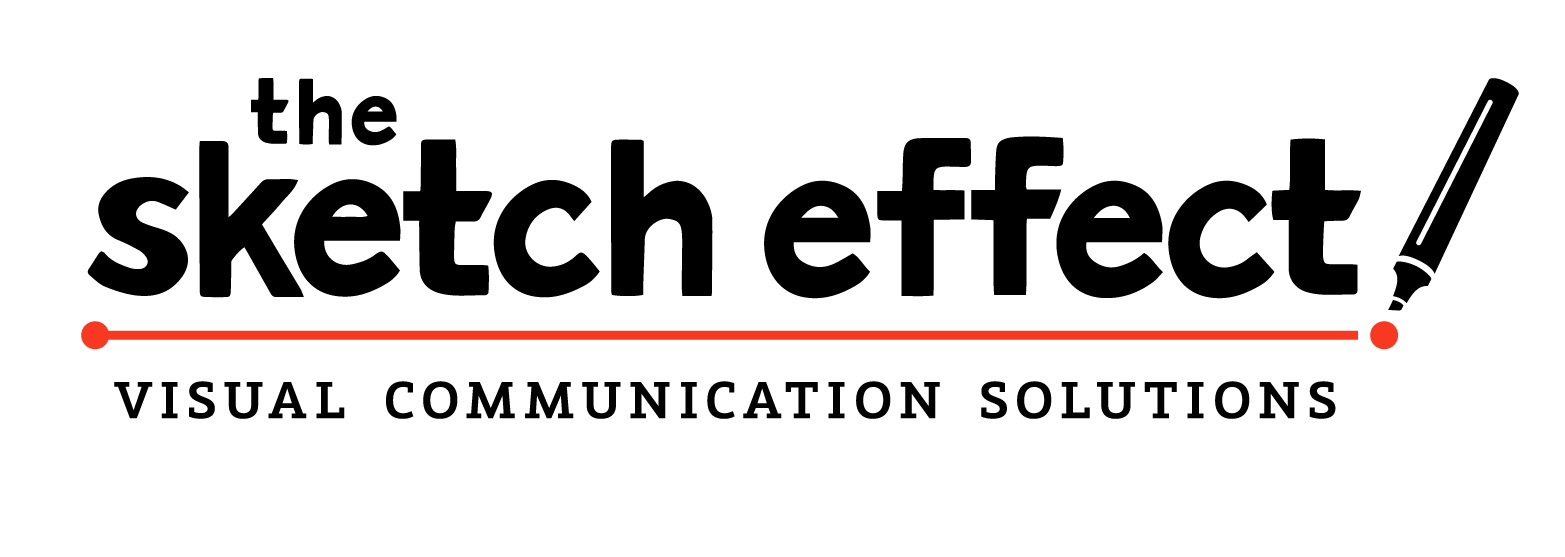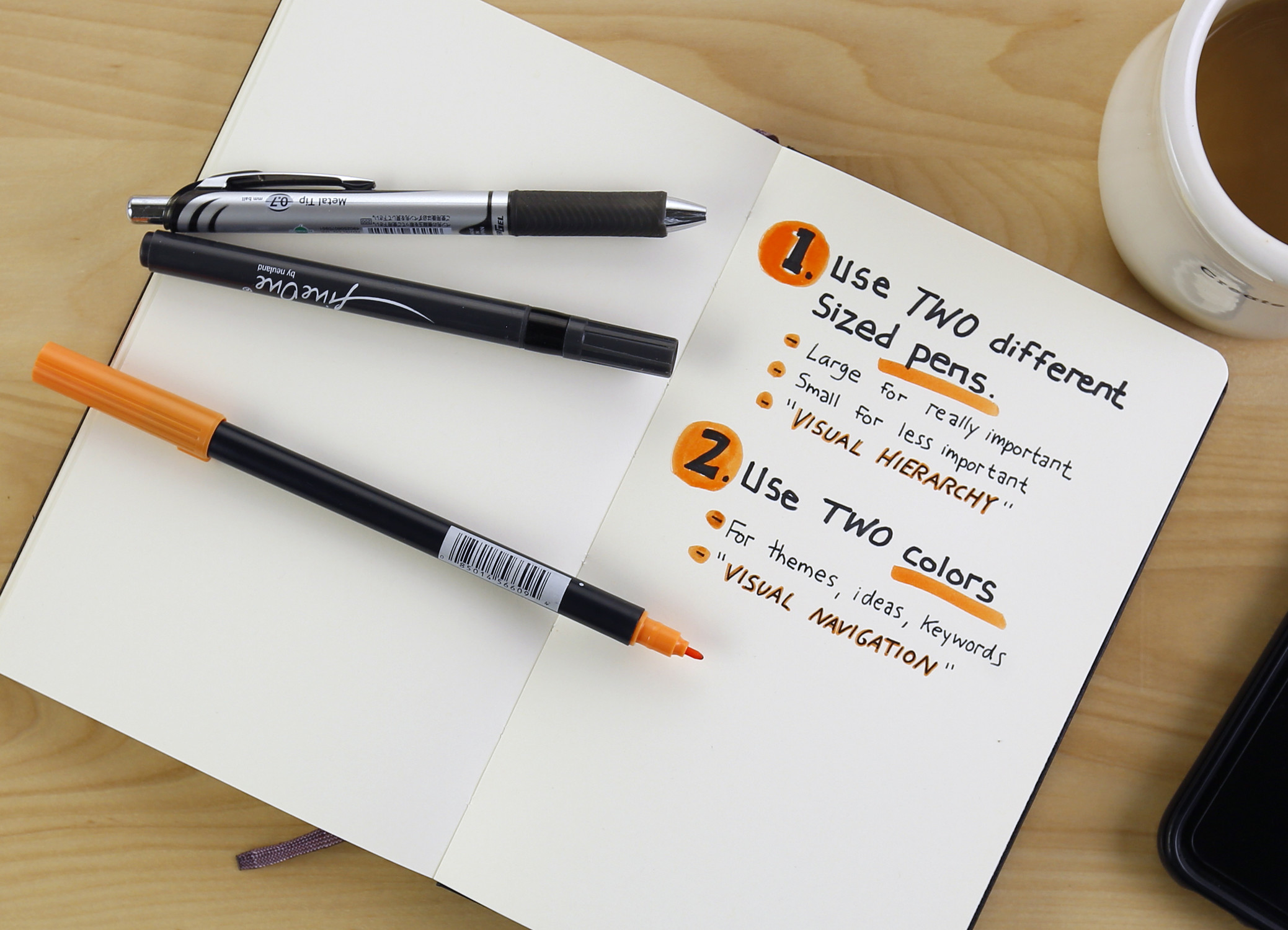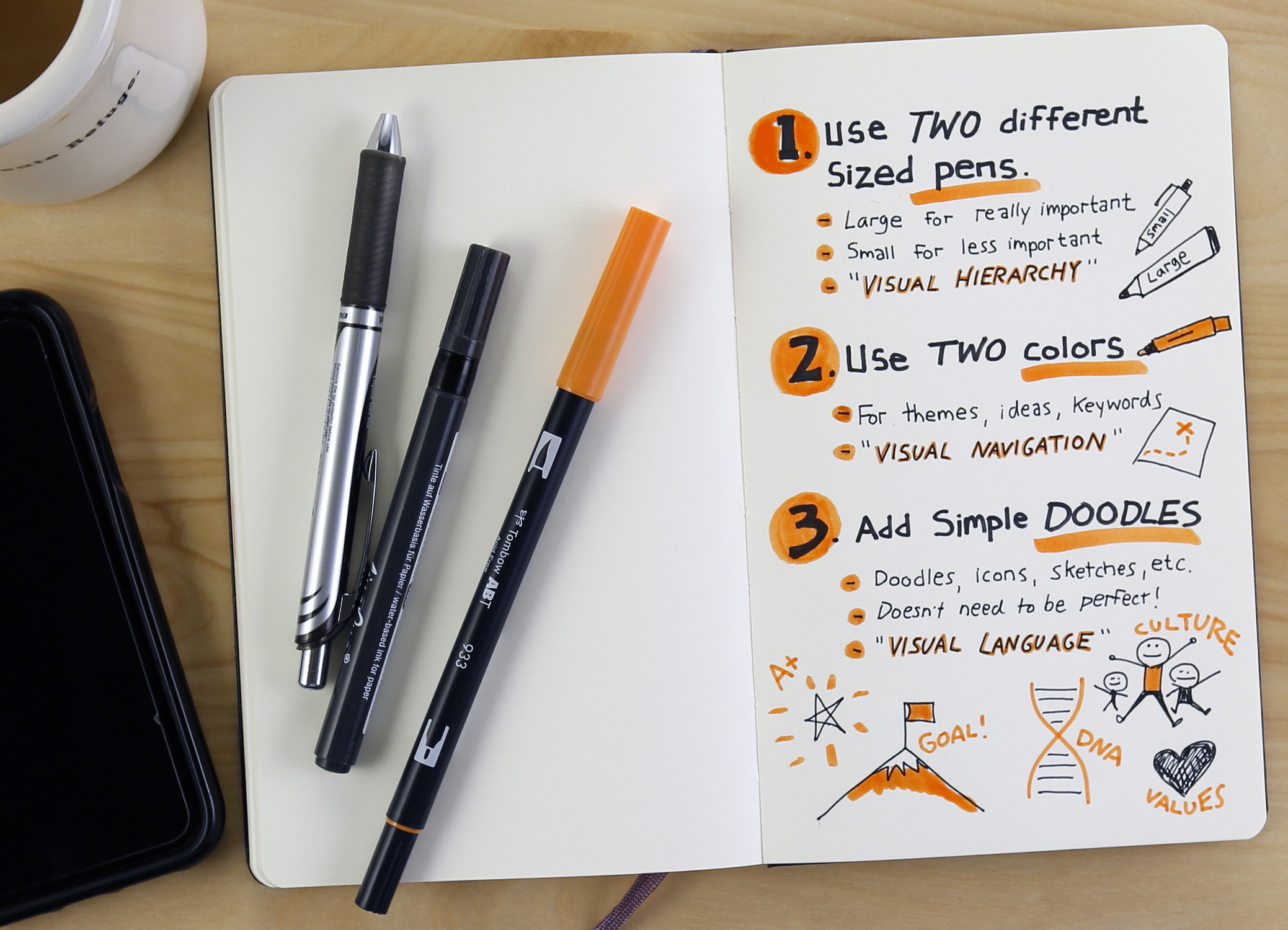If you’re a modern professional, odds are you attend a lot of meetings. A lot of meetings.
And if you’re an effective modern professional, you probably take notes. A lot of notes.
If you’re like most workplace note-takers, your notes are dense, wordy lines upon endless lines of text, repeated page after page in notebook after notebook. They probably look like this:
Let’s get real: this kind of notes are…kind of bad. They’re bad because they’re not as effective as they could be.
Notes like this may make you feel productive in the moment, probably help you stay marginally engaged in the meeting, and maybe, maybe will be referenced later…. but their value and usefulness ends there. The more likely fate of your notes is they end up in a drawer or digital file, collecting dust, never to see the light of day again.
Poor, poor notes.
But hey, there’s good news!
At The Sketch Effect, we are professional note-takers. We’ve spent hours upon hours perfecting the art of effective visual note-taking at client meetings and events all over the country.
Although some of our abilities could be considered “magic” or “superhuman”, there are a handful of techniques anyone can learn and implement without any training or pre-existing talent whatsoever.
So, here are three super simple techniques to take better notes:
1. Use Two Different Sized Pens
Use a larger pen for writing down the really important ideas (such as headers, big points, and main themes) and use a smaller pen for the less important ideas (like details and supporting facts).
Now your notes will have basic Visual Hierarchy, helping your eye quickly identify the most important content on the page.
(We like this pen for larger letters and this pen for smaller letters. We especially love this dual-tip pen, which has a large and small point on either end.)
2. Use Two Colors”
Having two colors available will give you the option to use specific colors for specific, recurring themes, ideas, or content. You can also use a secondary color for emphasis of keywords.
For instance, if you’re scribbling down several different dates, why not write them all down with a red pen?
Now your notes will have Visual Navigation cues to help you more easily sort through the content on the page.
(We like these markers for secondary coloring.)
3. Add simple doodles or icons
This is where your notes get fun. And please don’t be intimidated!
If a certain idea lends itself to an image, then draw a simple doodle or icon. It doesn’t need to be perfect or professional-looking.
Even the simplest of visuals will add a layer of Visual Language to your notes, making the ideas on the page more robust, readable, memorable and, frankly, more fun to look at. This adds in a degree of visual learning, the most powerful of all learning channels, giving you a more well-rounded and holistic learning experience.
Plus, the simple, tactile act of intentional doodling adds the element of kinesthetic learning, helping you stay more engaged and learn more effectively that you would otherwise.
(We like the paper in these notebooks for doodling.)
So that’s it. Nothing too crazy and anyone can do it (especially those people who “can’t even draw a stick-figure”).
Implementing these three techniques (or even just one or two) will make your notes better and increase their effectiveness. These techniques will also make you a better note-taker by encouraging you to synthesize, rank, and sort ideas as you write them down, think visually and engage kinesthetically.
Happy note-taking!










